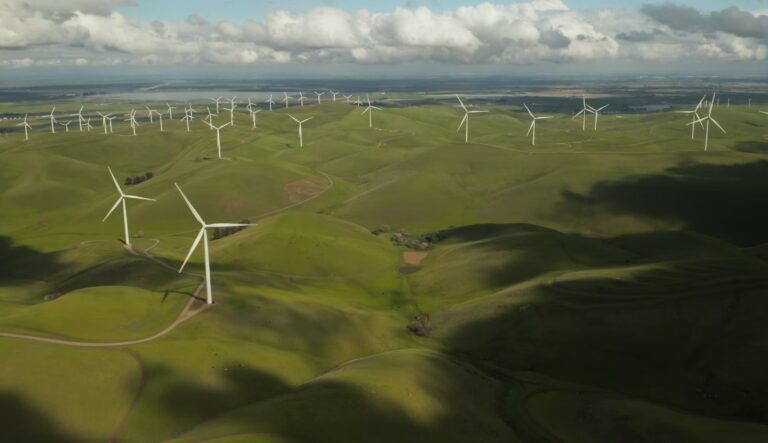As early as 2020, more than 110 had committed to the goal of zero emissions by 2050, with China, the largest emitter, setting 2060 as the date.
Carbon neutrality implies that some emissions are still produced, but these are offset elsewhere, leading to net zero emissions.
Table of Contents
The race toward zero emissions in short order
The goal of the Paris Pact is to ensure that global temperature growth remains below 2°C by 2100, preferably close to 1.5°C.
However, according to the UN Emissions Gap Report 2020, despite a brief decrease in carbon dioxide emissions caused by the COVID-19 pandemic, the world is still heading for a temperature increase of more than 3°C this century.
More than 110 countries have committed to achieving net zero emissions in accordance with the Paris Agreement. But some have yet to establish adequate policies and laws to combat climate change. Energy and Climate Intelligence Unit offers a “Net Zero Emissions Tracker” to list countries in the race to Net Zero Emissions.
So far, only 6 countries (Benin, Bhutan, Comoros, Gabon, and Suriname) have met the negative carbon emissions target, while other countries have passed legally binding agreements, bills, or action plans.
There are 14 countries with legally binding agreements so far, including Sweden, the United Kingdom, France, Denmark, New Zealand and Hungary.
Countries with negative greenhouse gas emissions today
Bhutan
Bhutan receives more greenhouse gases from the world than it emits. As a largely forested country with a population of 750,000, most people work in agriculture and forestry.
Much of the population is Buddhist and prioritizes health and happiness, working hard to protect the environment. Although many work in forestry, the country banned timber exports in 1999. The law mandates that 60 percent of the land must remain sustainably forested.
Read also: Bhutan is the first carbon-negative country in the world
Suriname
According to the United Nations, Suriname is 93 percent covered by forest, so it absorbs more greenhouse gases than it emits. Despite being a small state, it is committed to preventing global warming and doing its part.
Countries like this are also more susceptible to climate change than other nations, although they contribute less to C02 emissions. This will cost Suriname $969 million to keep greenhouse gas emissions low. Their plan is to maintain 93 percent forest cover and keep renewable energy sources above 35 percent by 2030.
Countries with legally binding agreements
Sweden
Under the Climate Act and Climate Policy Framework, in 2017 Sweden set a goal of achieving carbon neutrality by 2045, so that the amount of greenhouse gases it emits will be reduced by Sweden’s natural ecological cycle and projects carried out abroad.
Every four years Sweden will draft new policy and budget targets that will work in a consistent way. One of their goals is to reduce emissions by 70 percent (compared to 2010) in the road transport sector by 2030.
United Kingdom
In 2019, Theresa May set a zero emissions target and set a goal for the United Kingdom to achieve net zero emissions by 2050. The country was the first of the G7 to set this target. They reduced emissions by 29% between 2010 and 2019.
There are strong doubts about whether the targets can be maintained, as it will entail very high costs, but the British are doing their best to reduce their carbon footprint and have many reasons to be optimistic about reaching the net zero emissions target by 2050, as they have also reduced their use of oil and gas in an economy that has grown by 20 percent.
In 2019 alone they reduced greenhouse gas emissions by 2.9 percent, lowering them every year for seven consecutive years, which is a record. These low emissions in the UK have not occurred since 1888.
France
France has set a net zero emissions target and a plan with multiple steps to eliminate GHG emissions in the coming years. By 2022 they will have no more coal-fired power plants. By 2030, the law decided to reduce fossil fuel consumption by 30-40%.
Denmark
In 2019, Denmark legally established a goal of net zero emissions by 2050. They are also trying to reduce emissions by 70 percent by 2030 and, as part of their climate law, have stipulated that all new cars registered must be zero-emission by 2030.
New hybrid cars will no longer be allowed from 2035. In 2020, Denmark introduced many initiatives to combat climate change, including contributing wind power to Europe’s largest solar farm.
New Zealand
In 2019, the New Zealand government established a net zero emissions target by 2050 and a climate change law.
In agriculture, the country is also seeking to reduce emissions by 10 percent by 2030. This strategy also includes a biodiversity law and targets for the circular economy.
It has legally established that new coal-fired power plants will no longer be allowed and that investment in renewable energy will increase.
Hungary
In 2020, the Hungarian government adopted a renewable energy and natural gas plan and created a decarbonization fund. They set targets to reduce emissions by 40 percent by 2030.
Infrastructure will be upgraded and there will be more integration of renewable energy. They decided to build carbon-free power plants by 2030 and made many other smart choices.
Read also: Referendum on “carbon neutrality” passes in Switzerland












